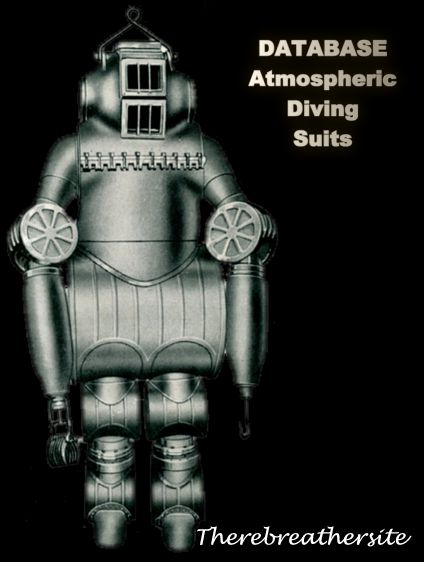
Hall and Rees submarine escape apparatus.
Although not directly related to atmospheric diving suits, the invention of a rebreather for escape purposes using Oxylithe is worth mentioning here.
Submarine Escape
Early submarines had a tendency to sink, and a number of accidents before the First World War made the Admiralty look into the possibility of developing an escape apparatus for use by trapped crews. One of these, designed by Captain S.S. Hall and Fleet Surgeon O. Rees, and manufactured by Siebe Gorman, briefly went into production.
It incorporated a canister containing ‘Oxylithe’, a special chemical which when breathed upon gave off oxygen and absorbed carbon dioxide. In 1903 to 1907 the Swiss Professor Georges Jaubert, invented Oxylithe, which is a form of sodium peroxide (Na2O2) or sodium dioxide (NaO2). As it absorbs carbon dioxide, it emits oxygen. It consisted of a hard helmet and a belted, long-sleeved tunic. Inside the tunic was a canister of sodium peroxide which gave off oxygen while absorbing carbon dioxide. The use of sodium peroxide was an interesting choice as it had a tendency to ignite when wet. The equipment was very bulky and doubts existed about the wearer’s ability to exit through the upper hatch of a submarine when wearing it. Despite its workable design, the Hall-Rees apparatus was phased out – one for each crew member simply took up too much room in a cramped submarine.
Sydney Stuart Hall and Oswald Rees residing on HMS Mercury patented their invention in 1908 with US 896447. Professor Georges Francois Jaubert was a Swiss chemist who invented Oxylithe and has numerous patents on his name. Patents related to the oxylithe are for example GB 1907 patent 17242
If you have additional information about the Hall and Rees escape apparatus please send your info to jw.bech@quicknet.nl

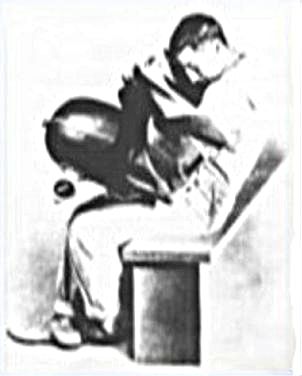
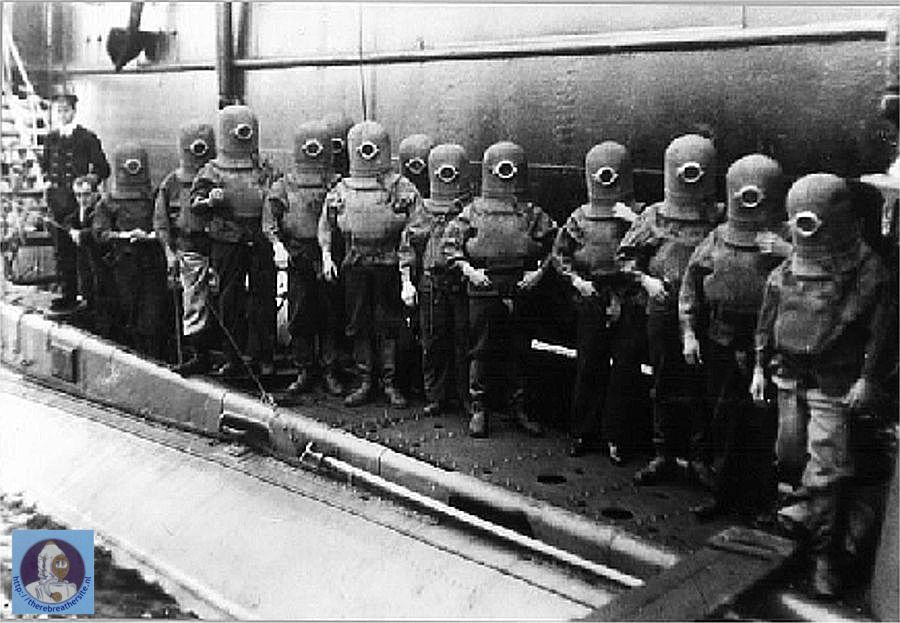
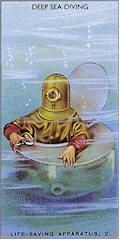
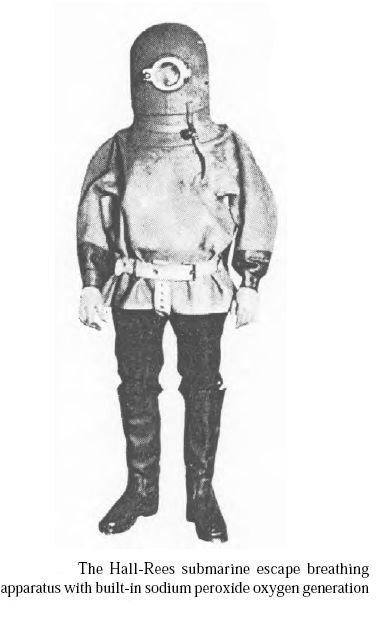
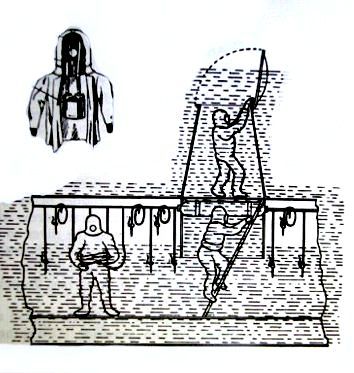
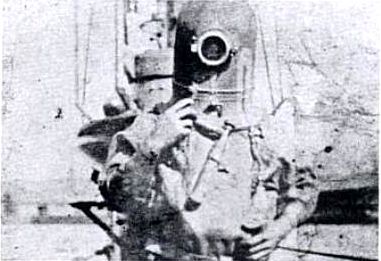
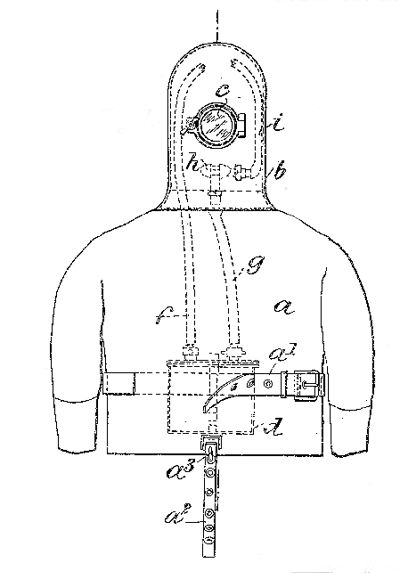
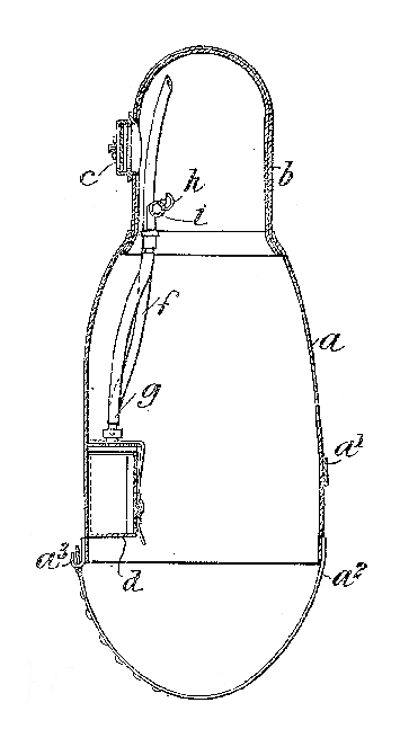
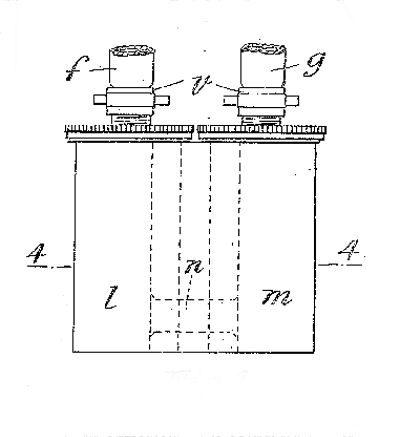
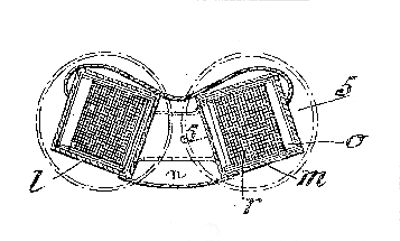
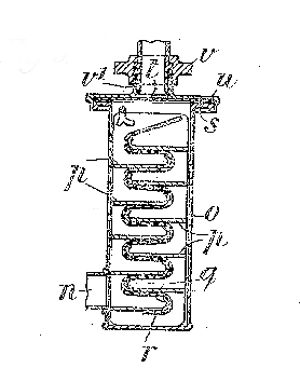
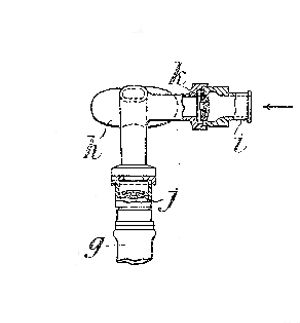
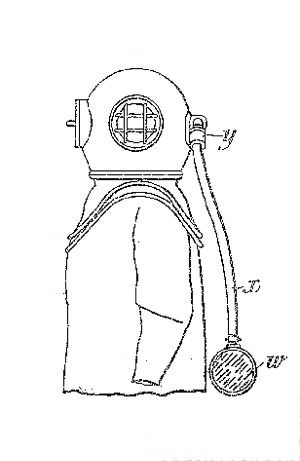

Therebreathersite was founded by Jan Willem Bech in 1999. After a diving career of many years, he decided to start technical diving in 1999. He immediately noticed that at that time there was almost no website that contained the history of closed breathing systems. The start for the website led to a huge collection that offered about 1,300 pages of information until 2019. In 2019, a fresh start was made with the website now freely available online for everyone. Therebreathersite is a source of information for divers, researchers, technicians and students. I hope you enjoy browsing the content!
